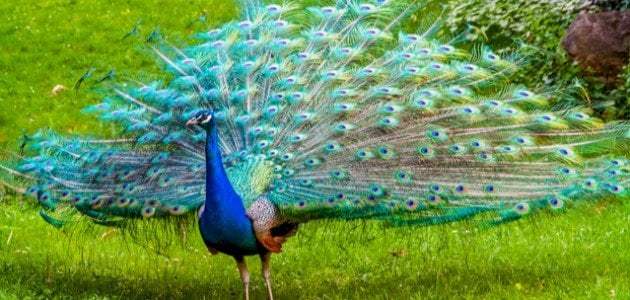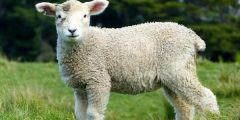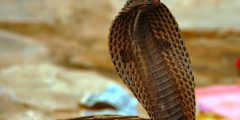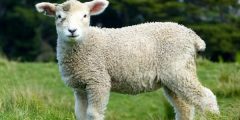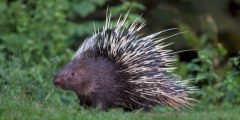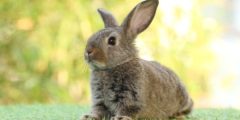Formal characteristics of the peacock
Colors of the peacock bird
The peacock is called a peacock, and it is a name given to both sexes. The male is called a peacock, while the female is called a peahen. The peacock is considered one of the most beautiful and flamboyant birds. This is due to the variety of colors of its feathers.[XNUMX]
In general, the colors of female feathers are less bright than the colors of male feathers, as males have blue and green colored feathers, while females have gray or brown feathers. There is also another type of peacock that is distinguished by the color of its feathers only white, and it is called the white peacock.[XNUMX]
Peacock size
Females weigh about 2.75 - 4 kg, while male peacocks outweigh females, reaching 4 - 6 kg, while the length of male peacocks is about 1.8 - 2.3 m, while females reach 0.9 - 1 m in length.[XNUMX] As for the wings, each width reaches 1.5 metres.[XNUMX]
Peacock feathers
Male seagulls have more than 200 feathers, unlike females, which have fewer feathers, estimated at a hundred or more.[XNUMX]
Read also:Information about extinct animalsThe feathers of the seagull in females and males are also characterized by the presence of a spot resembling an eye, which is colorful and attractive in males and its colors vary between blue, green, yellow, golden, and brown.[XNUMX] In females, they are dull in color.[XNUMX] In rare cases, it is white.[XNUMX]
Peacock head
Male and female peacocks have a blue crest located on the top of their heads, but there is no specific reason for its presence.[XNUMX]
Peacock tail
Male seagulls have long, colorful tails. A male peacock's tail can be about two meters long, while female peacocks have short tails with dull greyish-brown feathers.[XNUMX]
The long tail constitutes more than 60% of the peacock's length, and the peacock can spread its tail in the shape of a fan, and when it is not straight and the peacock drags its tail behind it, it is called (in English: train).[XNUMX]
Behavioral characteristics of the peacock
Social beings
The peacock is considered a social being by nature. It is often found in groups that live and play together and also migrate together in groups of 10 peacocks.[XNUMX]
They also communicate with each other using loud sounds during the morning and late at night, and they also send warning messages by emitting some low-frequency sounds that are inaudible to humans.[XNUMX]
Read also:Reem gazelleAggressive beings
Peacocks defend their land fiercely and aggressively. They spread their tails to become like a fan and shake them to frighten enemies. They send warning messages to other individuals using a low-frequency sound that is inaudible to humans.[XNUMX]
The male mates with more than one female
The male peacock is not satisfied with one female for mating; It mates with up to six different peacocks.[XNUMX]
Mating takes place upon the consent of the female peacock. The male peacock jumps on her back, aligns their sexual organs known as the cloaca, and has intercourse. After mating, the female builds her nest on the ground from shallow grasses.[XNUMX]
The female lays up to six eggs in the wild, and the mother incubates the eggs for 28 to 30 days, then moves her children away from the original nest, as the egg shells may attract predators. It is worth noting that after mating, the peacock separates from the female, and does not share with her in mating. Raising the children leaves it entirely up to her.[XNUMX]
reproduction
The breeding season begins in the spring, during which peacocks create small areas close to each other known as leks, the goal of which is to increase the opportunity for males to reach the largest number of females.[XNUMX]
Read also:Where do peacocks live?Once the peacocks meet, they begin to emit several distinctive sounds, as a call to attract females to their area before the courtship ceremony begins, and these sounds can be heard from very far away in the wild.[XNUMX]
The males begin to wander between the different areas, and perform their courtship rituals to attract the females. They spread their tail feathers in the shape of a fan, strutting them back and forth and shaking them to make a rattling noise aimed at attracting the attention of the females. Then the females choose the males based on the one with the largest and most colorful feathers.[XNUMX]
Peacock bird sound
Peacocks are noisy birds that make sounds to communicate with each other at all times, from early morning until late at night. They also emit low-frequency sounds that are inaudible to humans, warning their peers when they are in danger.[XNUMX]
Peacock feeding
The peacock belongs to omnivorous animals, which are living organisms that feed on animal and plant materials.[XNUMX] Thus, it feeds on anything suitable for it to eat, whether animal or plant. Examples of its basic foods include: fruits, grains, seeds, flower petals, plants, reptiles, amphibians, and insects.[XNUMX]
When it is in the gardens, it also eats what it finds of bread and waste. It can also feed on small mammals, including mice and snakes. Peacocks also catch flies from the air and chase butterflies.[XNUMX]
Home of the peacock
It is the continent of Asia The original home of the peacockThere are other habitats that vary according to the type of peacock. For example, the blue peacock lives in East Asia, while the Indian peacock lives in India, and the Congo peacock is native to Africa. The peacock can also be found in some regions of Australia.[XNUMX]
In general, peacocks prefer a warm climate to live in; Therefore, it is often found in its original habitats in the desert, savannah areas and forests, and summer is the active and breeding season for peacocks.[XNUMX]
In addition, the Indian peacock is found - especially the Indian peacock - in the forests of animals spread around the world, and it can be in the company of many individuals regardless of their habitat, as the peacock is raised as a pet inside their homes or farms.[XNUMX]
